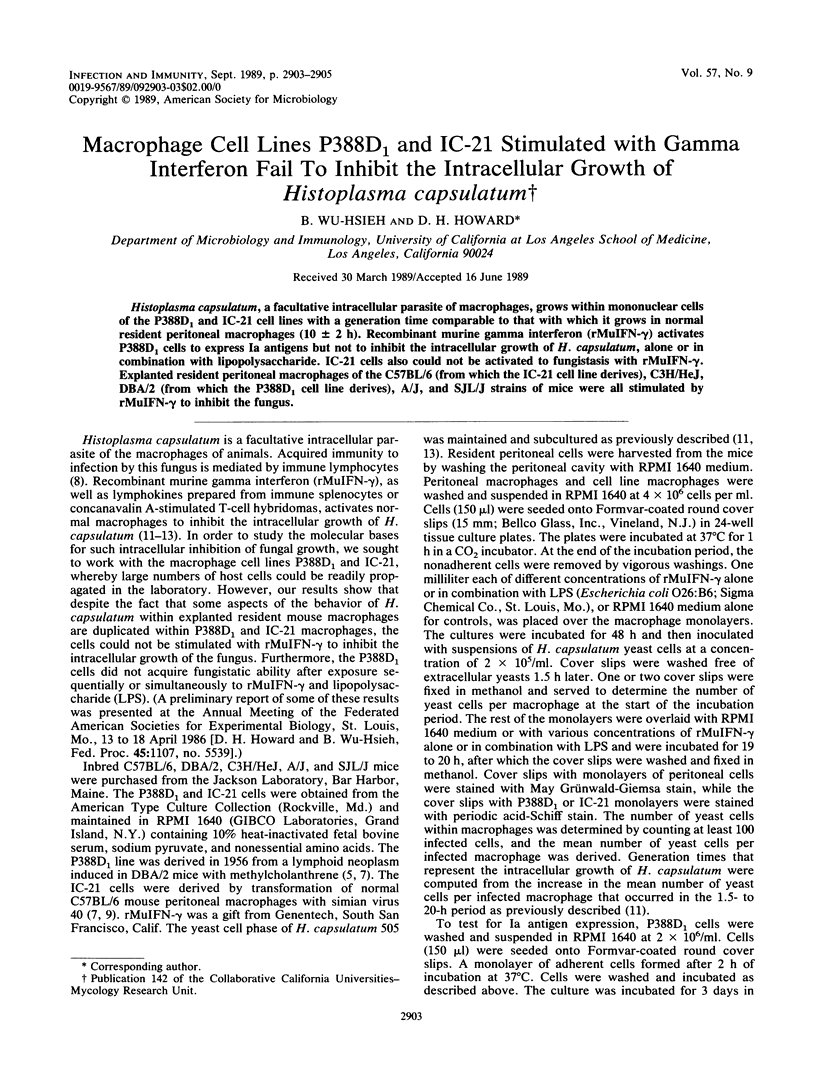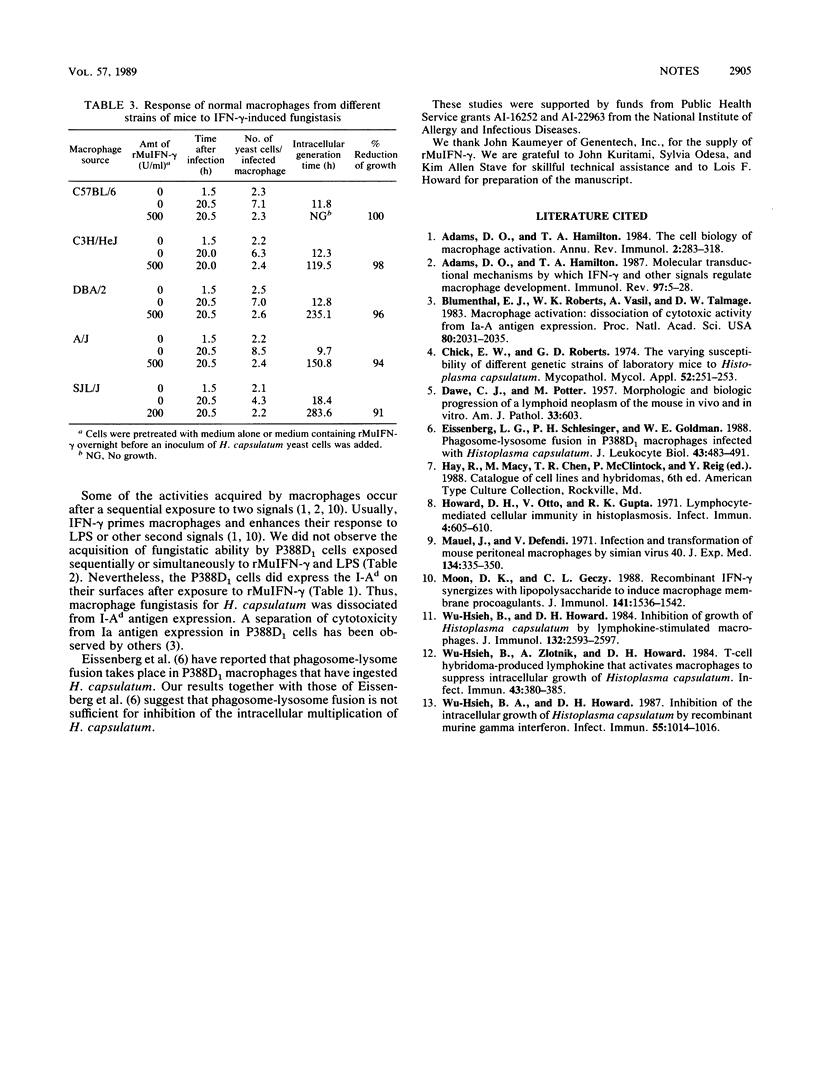Abstract
Histoplasma capsulatum, a facultative intracellular parasite of macrophages, grows within mononuclear cells of the P388D1 and IC-21 cell lines with a generation time comparable to that with which it grows in normal resident peritoneal macrophages (10 +/- 2 h). Recombinant murine gamma interferon (rMuIFN-gamma) activates P388D1 cells to express la antigens but not to inhibit the intracellular growth of H. capsulatum, alone or in combination with lipopolysaccharide. IC-21 cells also could not be activated to fungistasis with rMuIFN-gamma. Explanted resident peritoneal macrophages of the C57BL/6 (from which the IC-21 cell line derives), C3H/HeJ, DBA/2 (from which the P388D1 cell line derives), A/J, and SJL/J strains of mice were all stimulated by rMuIFN-gamma to inhibit the fungus.
Full text
PDF


Selected References
These references are in PubMed. This may not be the complete list of references from this article.
- Adams D. O., Hamilton T. A. Molecular transductional mechanisms by which IFN gamma and other signals regulate macrophage development. Immunol Rev. 1987 Jun;97:5–27. doi: 10.1111/j.1600-065x.1987.tb00514.x. [DOI] [PubMed] [Google Scholar]
- Adams D. O., Hamilton T. A. The cell biology of macrophage activation. Annu Rev Immunol. 1984;2:283–318. doi: 10.1146/annurev.iy.02.040184.001435. [DOI] [PubMed] [Google Scholar]
- Blumenthal E. J., Roberts W. K., Vasil A., Talmage D. W. Macrophage activation: dissociation of cytotoxic activity from Ia-A antigen expression. Proc Natl Acad Sci U S A. 1983 Apr;80(7):2031–2035. doi: 10.1073/pnas.80.7.2031. [DOI] [PMC free article] [PubMed] [Google Scholar]
- Chick E. W., Roberts G. D. The varying susceptibility of different genetic strains of laboratory mice to Histoplasma capsulatum. Mycopathol Mycol Appl. 1974 Apr 30;52(3):251–253. doi: 10.1007/BF02198750. [DOI] [PubMed] [Google Scholar]
- Eissenberg L. G., Schlesinger P. H., Goldman W. E. Phagosome-lysosome fusion in P388D1 macrophages infected with Histoplasma capsulatum. J Leukoc Biol. 1988 Jun;43(6):483–491. doi: 10.1002/jlb.43.6.483. [DOI] [PubMed] [Google Scholar]
- Howard D. H., Otto V., Gupta R. K. Lymphocyte-mediated cellular immunity in histoplasmosis. Infect Immun. 1971 Nov;4(5):605–610. doi: 10.1128/iai.4.5.605-610.1971. [DOI] [PMC free article] [PubMed] [Google Scholar]
- Mauel J., Defendi V. Infection and transformation of mouse peritoneal macrophages by simian virus 40. J Exp Med. 1971 Aug 1;134(2):335–350. doi: 10.1084/jem.134.2.335. [DOI] [PMC free article] [PubMed] [Google Scholar]
- Moon D. K., Geczy C. L. Recombinant IFN-gamma synergizes with lipopolysaccharide to induce macrophage membrane procoagulants. J Immunol. 1988 Sep 1;141(5):1536–1542. [PubMed] [Google Scholar]
- Wu-Hsieh B. A., Howard D. H. Inhibition of the intracellular growth of Histoplasma capsulatum by recombinant murine gamma interferon. Infect Immun. 1987 Apr;55(4):1014–1016. doi: 10.1128/iai.55.4.1014-1016.1987. [DOI] [PMC free article] [PubMed] [Google Scholar]
- Wu-Hsieh B., Howard D. H. Inhibition of growth of Histoplasma capsulatum by lymphokine-stimulated macrophages. J Immunol. 1984 May;132(5):2593–2597. [PubMed] [Google Scholar]
- Wu-Hsieh B., Zlotnik A., Howard D. H. T-cell hybridoma-produced lymphokine that activates macrophages to suppress intracellular growth of Histoplasma capsulatum. Infect Immun. 1984 Jan;43(1):380–385. doi: 10.1128/iai.43.1.380-385.1984. [DOI] [PMC free article] [PubMed] [Google Scholar]


